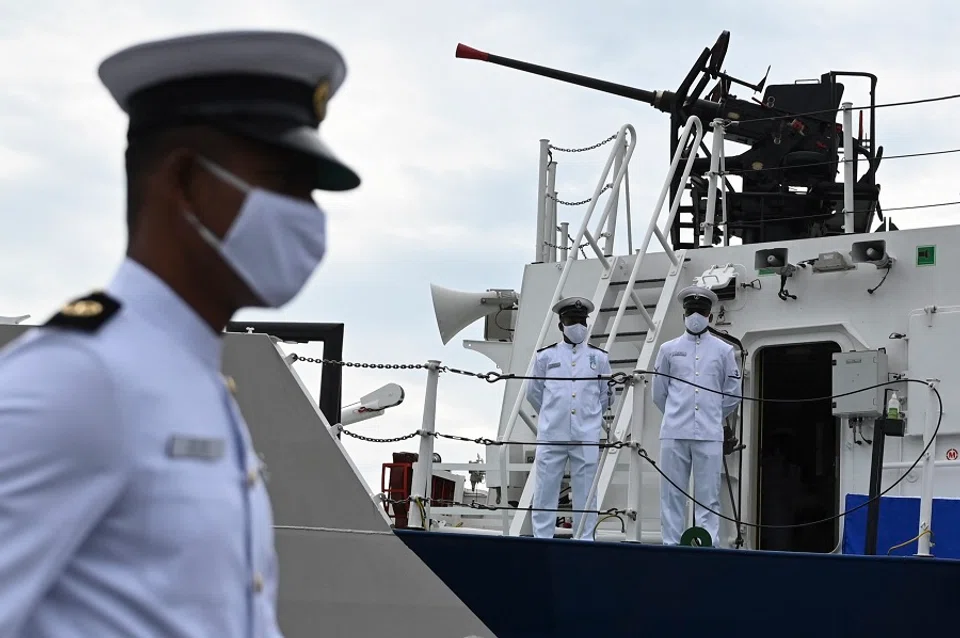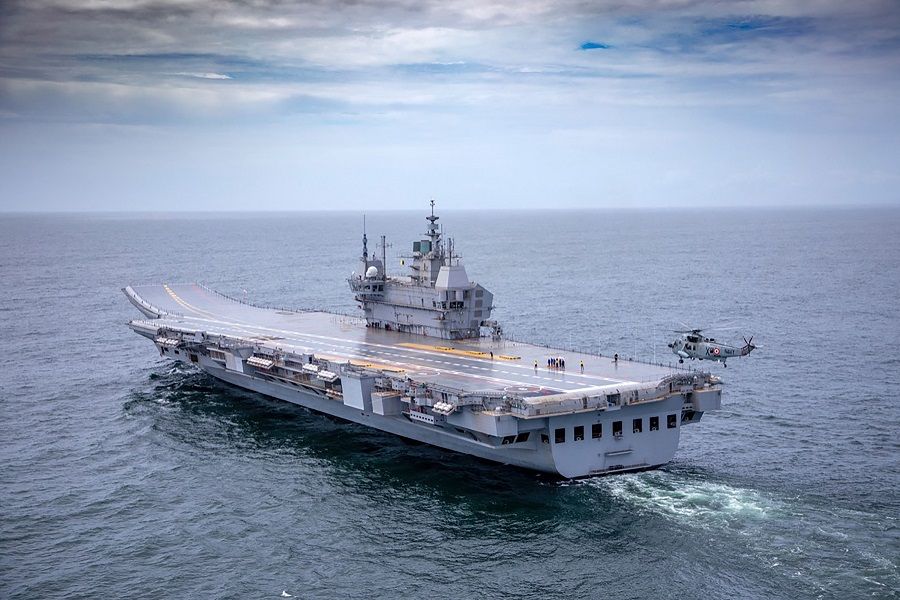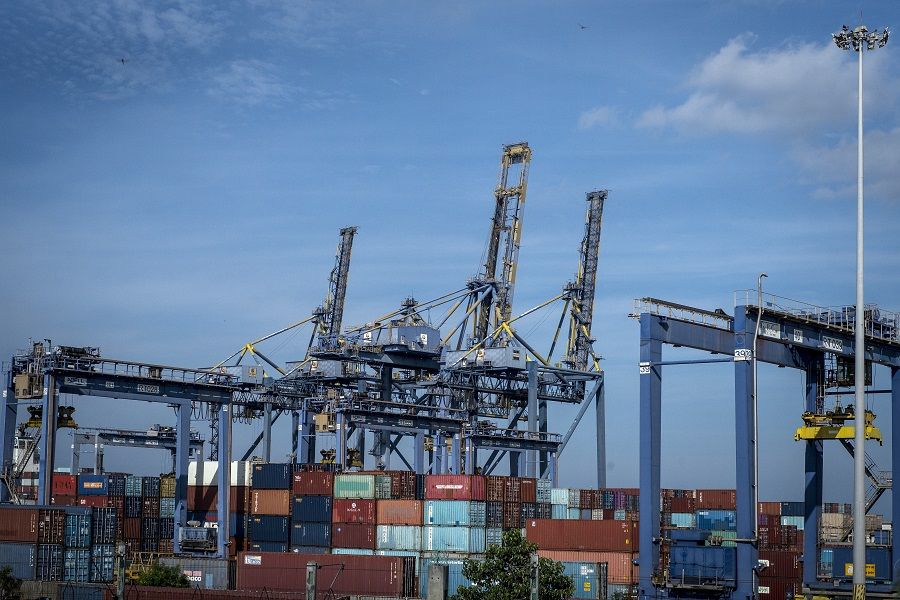With China's increasing assertiveness, India's active role in the Indian Ocean matters more than ever

India's strategic geography makes the Indian Ocean a priority in New Delhi's foreign policy and regional diplomacy. Highlighting India's priorities, in 2015, Prime Minister Narendra Modi categorically stated at the commissioning of the Coast Ship Barracuda in the service of the National Coast Guard of Mauritius, that India was at the crossroads of the Indian Ocean, that it was becoming more integrated globally, and that the Indian Ocean region (IOR) was at the top of India's policy priorities. He added, "Our vision for Indian Ocean Region is rooted in advancing cooperation in our region; and, to use our capabilities for the benefit of all in our common maritime home."
With this mindset, India's Indian Ocean strategy is underpinned by the strategic vision "Security and Growth for all in the Region (SAGAR)", which seeks "a climate of trust and transparency; respect for international maritime rules and norms by all countries; sensitivity to each other`s interests; peaceful resolution of maritime issues; and increase in maritime cooperation."

Under this vision, in May 2020, India undertook Mission Sagar to deliver Covid-19 related humanitarian assistance, aid, and outreach to the Indian Ocean littoral states. In March 2021, as part of Mission Sagar - IV, the Indian naval ship INS Jalashwa delivered a consignment of 1,000 metric tons of rice and 100,000 hydroxychloroquine tablets to Madagascar as assistance to deal with natural calamities. The shift towards an Indo-Pacific security architecture has further placed a greater demand on India to take a greater role in the IOR.
India's erstwhile reluctance towards seeking an active role in the IOR can be attributed to New Delhi's continental outlook given its conflicts with Pakistan and border tensions with China, coupled with internal security issues related to terrorism, insurgencies and others.
Shift towards a maritime outlook
India's geostrategic location enables it to occupy a central position in the IOR, and this defines the country's wider security environment. This geography, unique in South Asia, makes India a major stakeholder in the Indian Ocean.
Indian statesman K. M. Pannikar once argued that "while to other countries the Indian Ocean is only one of the important oceanic areas, to India, it is a vital sea. Her lifelines are concentrated in that area, her freedom is dependent on the freedom of that water surface".

Pannikar's argument holds greater relevance given the growing significance of the Indian Ocean in the 21st century. That is, the Indian Ocean, tactically placed between the Arabian Sea and the Bay of Bengal, has become the most important world trade corridor, entailing a converging point of energy security and geopolitics - which Robert Kaplan calls the "centre stage for the challenges of the 21st century". As described by the Indian Ocean Rim Association (IORA):
"As the third-largest ocean woven together by trade routes, commands control of major sea-lanes carrying half of the world's container ships, one-third of the world's bulk cargo traffic and two-thirds of the world's oil shipments, the Indian Ocean remains an important lifeline to international trade and transport."
What is noteworthy is that despite having a strategic geographical advantage, India maintained dormancy in the Indian Ocean given its limited maritime outlook. India's erstwhile reluctance towards seeking an active role in the IOR can be attributed to New Delhi's continental outlook given its conflicts with Pakistan and border tensions with China, coupled with internal security issues related to terrorism, insurgencies and others.

However, this position is shifting as India is demonstrating an interest in playing an active role in the IOR. This change has been catalysed by the strategic and security dimension of the Indian Ocean, as it is a vital sea lane with choke points such as the Strait of Hormuz, Strait of Malacca, Bab-el Mandeb, and others which are exposed to piracy, maritime disputes and great power competition.
India's quest towards playing an active role is driven by countering China's expanding footprint in the IOR.
India's interests in the Indian Ocean
Maintaining a strong foothold in the IOR is key to India's strategic and security interests. India's foremost interest lies in protecting the sea lines of communications as 95% of its trade and over 80% of its energy routes go through the Indian Ocean. But what has bolstered New Delhi's conduct in the Indian Ocean is China's expanding footprint. That is, China's presence has emerged from being limited to anti-piracy operations in Somalia; to that of building ports in the littorals (often argued as China's "encirclement policy"), the docking of Chinese warships and submarines (in Pakistan and Sri Lanka), and most significantly, building an overseas military base in Djibouti. This has catapulted India's interests beyond the continental outlook, as evident from the change in the Indian Navy's maritime strategy from "freedom to use the seas" to that of "ensuring secure seas" in 2015.

As stated in the Indian Navy's maritime security strategy document, this reorientation of India's maritime outlook is underlined by two key aspects: "First, the rise in sources, types and intensity of threats, with some blurring of traditional and non-traditional lines, requires a seamless and holistic approach towards maritime security. Second, in order to provide 'freedom to use the seas' for India's national interests, it is necessary to ensure that the seas remain secure." In this regard, India's quest towards playing an active role is driven by countering China's expanding footprint in the IOR.
New Delhi's Indian Ocean strategy
India's strategic shift towards engaging with the IOR was given impetus by Prime Minister Modi's visits to Seychelles, Mauritius and Sri Lanka in March 2015. This marked the first visit by an Indian leader to the Indian littoral states in three decades. Since then India has placed concerted focus on securing its interests in IOR as reflected in its initiatives that are mainly grounded in safeguarding its security concerns.
In January 2016, India's Ministry of External Affairs (MEA) created a separate division for the Indian Ocean region with the objective of strengthening relationships with key countries in the IOR such as Sri Lanka, Maldives, Seychelles, Mauritius and the structured trilateral maritime security dialogue (between India, Sri Lanka and Maldives) to address geostrategic security, economic and developmental interests in the IOR. In addition, India is also playing an active role in forums such as IORA, the Indian Ocean Naval Symposium (IONS) as well as by being an observer in the Indian Ocean Commission (IOC). In 2018, India launched the Information Fusion Centre - Indian Ocean Region (IFC-IOR) to boost regional maritime awareness among IORA partners.
India has built military partnerships with Indian Ocean littoral states, such as Seychelles, Madagascar, Reunion, Mauritius, Comoros and Mayotte, and with important IOR strategic military stakeholders such as France and the US.

India's Indian Ocean strategy is also played out by providing humanitarian assistance and disaster relief in crises, that is, becoming a first responder concerning rescue operations and naval assistance missions. For instance, in 2015, under Operation Rahat, India evacuated foreign nationals from 26 countries from Yemen. Similarly, in 2020, amid the pandemic, the Indian Navy's warship INS Khatri deployed under "Mission Sagar" carried out New Delhi diplomatic outreach to the Indian Ocean countries.
More importantly, India has built military partnerships with Indian Ocean littoral states, such as Seychelles, Madagascar, Reunion, Mauritius, Comoros and Mayotte, and with important IOR strategic military stakeholders such as France and the US. India is engaged in several naval exercises, such as multilateral naval exercise Milan with Indian Ocean states such as the Seychelles, Mauritius and the Maldives; the Malabar exercise which is now a quadrilateral exercise between Australia, Japan, India, and US; and bilateral naval exercises with Myanmar and Sri Lanka. Besides, to enhance and expand its military presence in IOR, India is developing two naval bases at the Assumption Island in Seychelles and Agalega in Mauritius. Furthermore, India has a joint initiative, the Asia-Africa Growth Corridor (AAGC) with Japan, and is increasingly aligning its maritime security issues in the IOR. with the "free and open Indo-Pacific" concept under the Quad.
As seen from above, India's Indian Ocean strategy highlights its pragmatic approach towards seeking a greater role in the maritime domain. Most certainly, this is not just aimed at being considered a native player but at being a responsible stakeholder in regional peace and stability. Thus, it can only be expected that India will continue on its pragmatic course and play a greater role in the IOR in the near future.
Related: Quad now centrepiece in India's China strategy | China in the Gulf: India overmatched but undaunted | India warms up to the US amid 'new cold' in India-China relations | India in the Indo-Pacific: Reining in China in the new theatre of great power rivalry | India's Covid-19 crisis: Why New Delhi is wary of Beijing's goodwill
